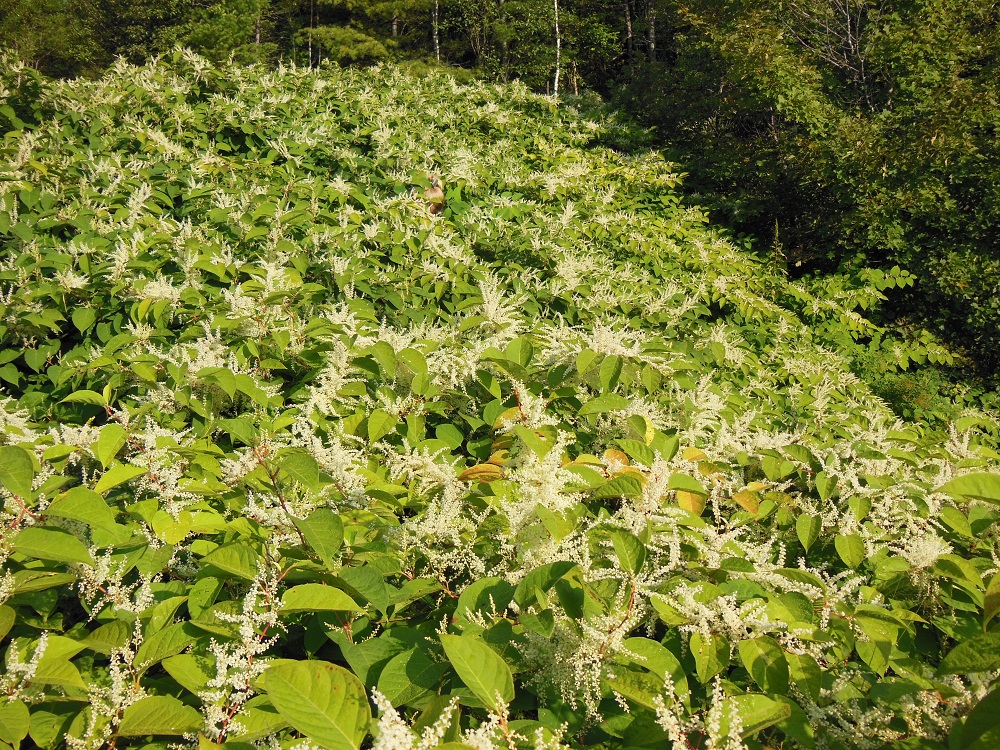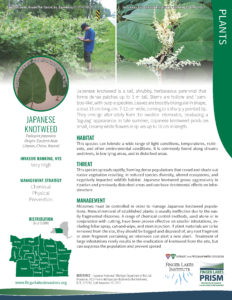Japanese Knotweed
Common Name: Japanese knotweed
Scientific Name: Fallopia japonica
Origin: Asia
Description
Japanese knotweed is a fast-growing, herbaceous perennial with jointed, hollow stems and alternate, leathery leaves that are broadly ovate. A cascade of white flowers blooms in August, and dormant reddish stems are visible in winter. Giant knotweed, Fallopia sachalinensis, is another nonnative knotweed in the Park.
Habitat
Japanese knotweed is found along forest edges and stream banks, as well as in disturbed and open areas such as roadways.
Threat
Knotweed’s early spring emergence and dense growth give it an edge over native plants, enabling it to take over large areas. Its thick rhizomes can extend horizontally through soils for 60 feet or more.
Management
Knotweed is very difficult to control. A stem injection or foliar treatment with systemic herbicide can be effective. Always read the label to ensure safe and appropriate use of any herbicide. Repeated controls are often necessary.
Distribution: View Map
Japanese knotweed is present in the FL-PRISM.









